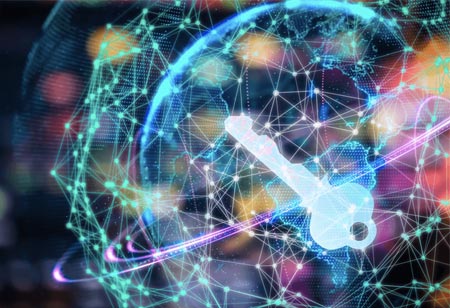THANK YOU FOR SUBSCRIBING
How to Establish Effective Cybersecurity Leadership in Post-COVID Era?
Cybersecurity executives must have a systemic and holistic view of their critical applications, facilities, properties, and vendors in order to assess the possible effects of a crisis on their staff, income, consumers

By
Apac CIOOutlook | Wednesday, April 14, 2021
Stay ahead of the industry with exclusive feature stories on the top companies, expert insights and the latest news delivered straight to your inbox. Subscribe today.
Cybersecurity executives must have a systemic and holistic view of their critical applications, facilities, properties, and vendors in order to assess the possible effects of a crisis on their staff, income, consumers, and the sustainability of critical services.
Fremont, CA: Work-from-home became a new standard for almost every organization after COVID-19 hit unexpectedly across the globe last year. Similarly, cybersecurity activities were confronted with enormous new obstacles. Despite the fact that companies are gradually returning to on-premises job models, a significant number of workers are still required to operate from home on a rolling basis in order to retain social distance at workplaces.
The work system may have been hybrid, but there is still widespread acceptance of work-from-home technology and much greater use of cloud services than anyone could have predicted. This has made it even more difficult for leaders to strike a balance and ensure the safety of their company's and informational assets with onsite and offsite workers.
New Security Challenges in the New Normal
Nurturing a Culture of Cyber Resilience
Since the digital world is a complex environment, cyber threats often develop ahead of regulations. It is important to prioritize incident management, business continuity, and recovery activities during the pandemic. They must improve their employees' cyber resilience even more than before.
Every day, as workers make security-related decisions, it is everyone's duty to keep the organization safe. Security leaders must assist workers in remaining secure by constantly teaching them to recognize phishing attempts, scammers, and online credit card frauds, as well as proactively informing them about emerging tactics that emerge during the pandemic.
Protecting the Organization's Critical Assets and Services
Cybersecurity executives must have a systemic and holistic view of their critical applications, facilities, properties, and vendors in order to assess the possible effects of a crisis on their staff, income, consumers, and the sustainability of critical services. As a result, it is important to maintain good cyber hygiene by maintaining an inventory of critical digital assets in order to ensure a vulnerability management strategy.
They must have a layered access scheme in place to give privileged users access to sensitive systems.
Organizations must incorporate layered protection to avoid data leakage and detect malicious activity from remotely connected endpoints in order to secure remote access.
Businesses must spend more and improve their monitoring and response capabilities to reduce the time from identification to mitigation. Track communication tools, staff, and even third parties remotely to detect suspicious activity in real-time.
See also: Top Remote Work Tech Solution Companies





